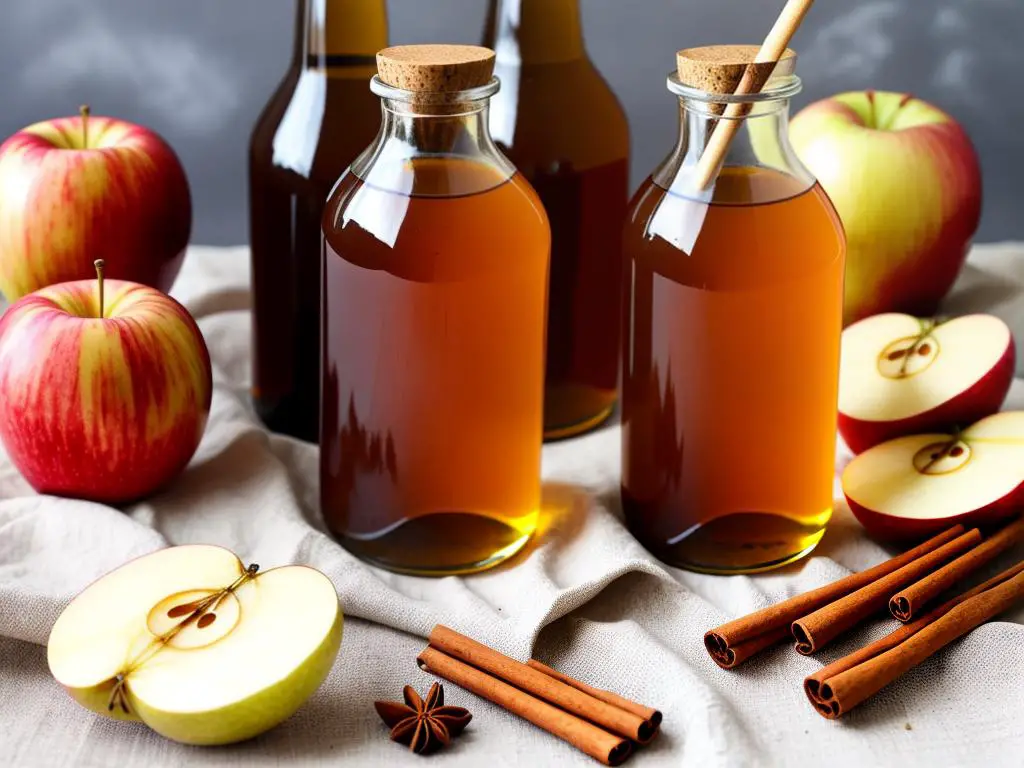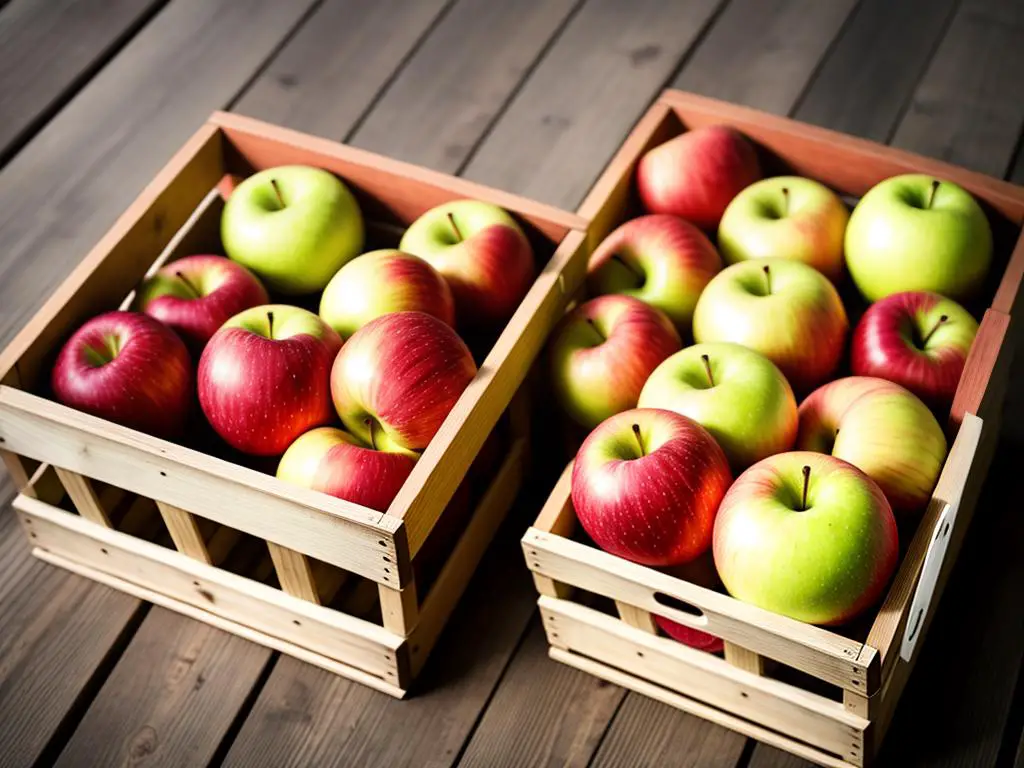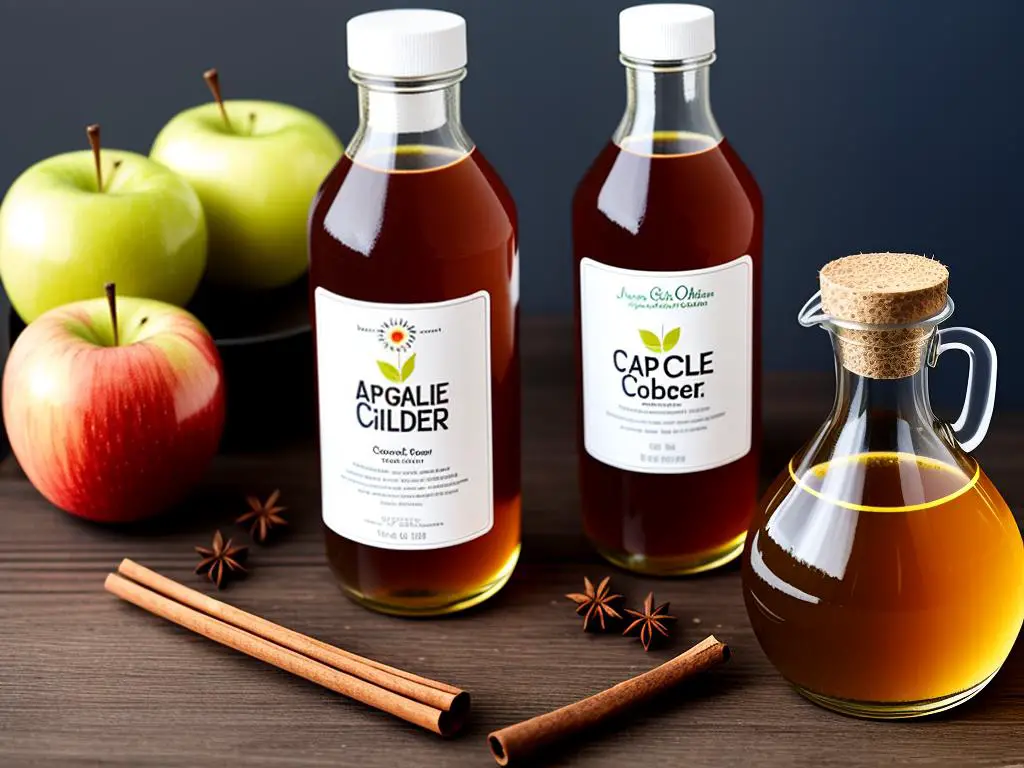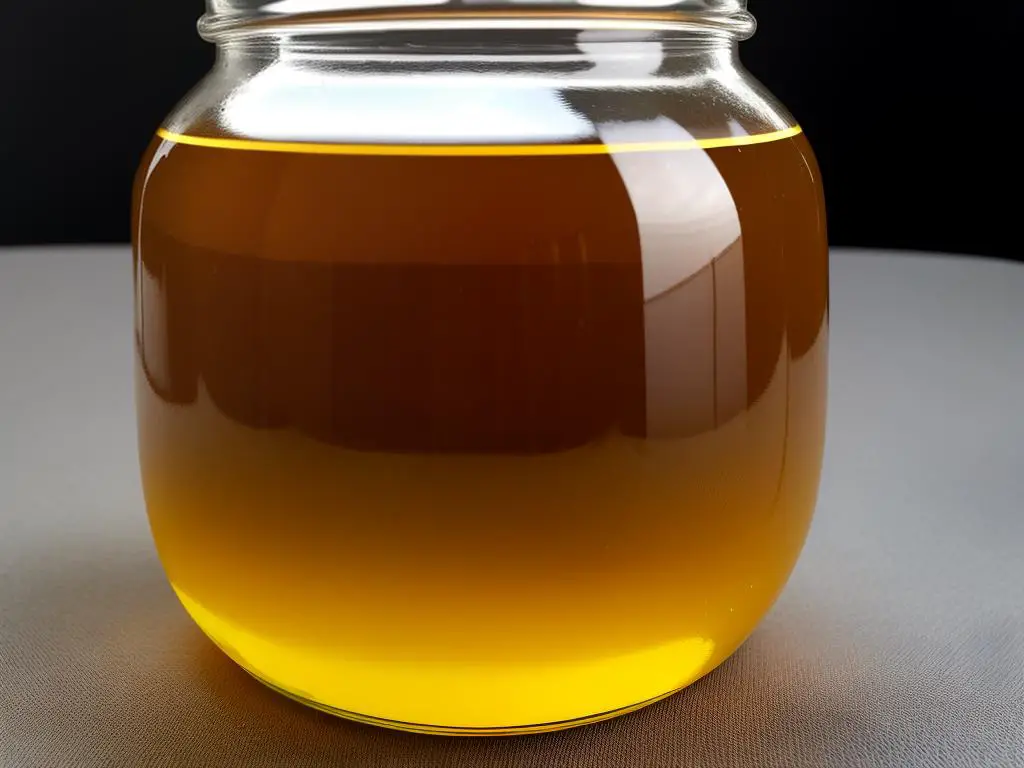Immersing yourself in the art of creating organic apple cider vinegar at home is a journey steeped in both understanding the fascinating science of fermentation and sourcing organic apples of the finest quality. Organic apple juice does not merely turn into apple cider vinegar; it’s a transformative process – a testament to life’s incredible capacity for change. From understanding the role that yeast and bacteria play, to the various stages of fermentation, this endeavor requires an insatiable curiosity and a great deal of patience. There is also a primal pleasure to be found in the tactile experience of preparing the apples and extracting their juices. Yes, cleanliness and sterility are crucial in this process to prevent unwanted microbial activities, however, there is a lot to be said about the simple act of connecting to the ingredients in such a natural and organic way.
Understanding the Process
Understanding the Science Behind Producing Apple Cider Vinegar
The Importance of Fermentation in Making Apple Cider Vinegar
Yeast: The Start of the Fermentation Process
During the initial fermentation stage, the yeast (Saccharomyces cerevisiae is often used) feeds on the sugars (fructose and glucose) present in the apple juice and converts them into alcohol (ethanol) and carbon dioxide. This conversion is an anaerobic process, meaning it occurs in the absence of oxygen. As a byproduct of this fermentation, heat is produced and can be noticed as a warm feeling when you touch the fermentation vessel. This first stage is also responsible for creating the base of the cider.
From Alcohol to Acetic Acid: The Role of Acetobacter Aceti
The Acetobacter aceti bacteria come into action after the yeast has transformed the sugars into alcohol. These bacteria thrive in aerobic conditions, meaning the presence of oxygen is crucial for them to function.
They oxidize the alcohol into acetic acid, the primary component that gives vinegar its sharp, sour taste. This acetic acid is also what distinguishes vinegar from alcoholic beverages like wine and cider. The amount of acetic acid can vary, but it typically ranges from 4 to 8% in apple cider vinegar.
During this process, you’ll notice the formation of a jelly-like substance, known as “the mother.” This substance contains the beneficial enzymes, proteins, and bacteria that give apple cider vinegar its numerous health benefits.
The Final Product: Apple Cider Vinegar
Transforming organic apple juice into apple cider vinegar isn’t an instant process. It can take a few weeks to a couple of months, depending on the temperature and conditions of your brewing area. The end product, organic apple cider vinegar, is a versatile ingredient with numerous culinary and health uses.
In conclusion, crafting apple cider vinegar is a fabulous way to dive into the world of fermentation. By understanding the basic principles and processes involved, you can experiment, optimize and eventually perfect making your very own homemade organic apple cider vinegar.

Sourcing and Preparing Organic Apples
Finding the Perfect Organic Apples for Cider Vinegar
Organic apples are excellent for making apple cider vinegar at home due to their natural sugar content which is necessary for fermentation. Sourcing the best organic apples may require a bit of searching. Depending on where you live, organic apples can be found at local farmer’s markets, community-supported agriculture (CSA) groups, or organic farms.
Alternatively, many grocery stores offer a variety of organic apples. Even though supermarkets are a valid option to find organic apples, your local farmers will often have the freshest ones. It could require a bit of trial and error to find which type of apples yield the best homemade organic apple cider vinegar, but don’t shy away from experimenting.
A great place to purchase organic apples in bulk for vinegar-making is Washington State’s Auvil Fruit Company. This family-run farm has been cultivating fruit for over a century and is renowned for its variety of delectable organic apples.
Preparing Organic Apples for Cider Vinegar
Once you’ve sourced your organic apples, it’s time for preparation. Start by washing them thoroughly under running water to remove any residual dirt or debris. Then, cut the apples into quarters. No need to remove the core or seeds, as they can be included in the first stage of the vinegar-making process.
Ensure to reserve some skin and stem as they contain the wild yeasts necessary to kickstart fermentation. Slice the apple quarters thinly to expose as much fruit surface as possible. This helps with the extraction of juice.
The Importance of Cleanliness & Sterility
One critical part of making vinegar at home is ensuring cleanliness and sterility throughout the process. Any bacteria or foreign substances can alter the flavor of your finished vinegar or worse, ruin the whole batch.
Materials such as your cutting board, knife, hands, and bowl should all be clean before starting. Most importantly, the container where you’ll be storing and fermenting your apple cider vinegar mix needs to be strictly sterile. A good method is to clean it thoroughly with boiling water.
Extracting Fresh Apple Juice
Extracting apple juice from your prepared organic apples can be done in multiple methods, two of which are using a juicer or a blender.
For a juicer, pass your apple slices through the machine and collect the apple juice that comes out. With a blender, fill it with your apple slices and blend until smooth. Then, strain the contents of the blender using a fine-mesh sieve or cheesecloth to separate the juice from the pulp.
After the extraction, you’re ready to move on to the fermentation process to transform the juice into apple cider vinegar. Remember, making vinegar is a delicate process with lots of room for creativity and experimentation, so keep trying until you get the perfect batch to your liking.

Fermentation and Maintenance
Starting Your Organic Apple Cider Vinegar Journey: Natural Fermentation 101
There’s probably no experience more rewarding for enthusiasts and hobbyists than creating homemade organic products and nurturing them to fruition. One perfect example is the satisfying task of making your own organic apple cider vinegar via natural fermentation. We’re going to guide you step-by-step on how to begin this process.
The start of this journey is simple. You’ll need organic apples, granulated sugar, water, and patience. The apples have to be organic because you need the natural yeasts on their skins to kickstart the fermentation. Slice up around six of these apples, cores and all, and place the pieces in a wide-mouth jar or ceramic pot. Mix 2 tablespoons of granulated sugar into a cup of water and pour this over the apples until they are completely submerged.
Now comes the waiting game. Cover the jar with cheesecloth or a clean dishtowel and secure it with an elastic band or twine. This covering allows the concoction to breathe while keeping any fruit flies at bay. Place the jar in a warm and dark area with a consistent temperature around 60-70F. The fermentation process will now commence and take approximately 2 weeks.
Maintaining your Fermenting Apple Cider Vinegar: Do’s and Don’ts
The maintenance of your organic apple cider vinegar requires some care and regular attention. About every other day, stir your mixture carefully with a wooden spoon to help evenly distribute the natural yeasts. Furthermore, ensure that the fruit pieces remain submerged in the water to prevent any chance of mold growth.
One thing not to worry about — it’s normal for a blobby, jelly-like substance (known as a “mother”) to form on the surface of your fermenting apple mixture. This is actually a critical mass of beneficial bacteria and yeasts, which are vital to the production of vinegar.
Recognizing Ready Apple Cider Vinegar and Safe Storage Procedures
After approximately two weeks of fermentation, you may begin to notice a sour, vinegary smell coming from your mixture. This is a good sign that your organic apple cider vinegar is ready. Taste test it at this point. If it has the right level of sourness for your liking, it is ready to bottle and store.
Here’s where you want to take some precautions to ensure that your fresh produce remains safe and ready for future use. Use a funneled jug to strain out the solids from your homemade vinegar liquid. Store the apple cider vinegar in food-grade glass bottles or jars with tight lids in a cool, dark, and dry place. Homemade apple cider vinegar has a nearly limitless shelf life and can be safely stored almost indefinitely. Happy fermenting!

After delving into the processes and the pleasures of creating your very own organic apple cider vinegar, you’ll find the result is more than just a bottle of vinegar; it has become a labor of love, a product of your efforts, knowledge, and nurturing. The subtle complexities in its flavor mirror the stages of fermentation, and its myriad of uses only further compound its value—from culinary applications to wellness practices. Yet, keeping consistent with your fermentation process and ensuring the optimal conditions for your brew remain are key. It doesn’t matter if you intended to develop this skill just for fun, or to reach a higher culinary expertise, each batch will always bring you something new. So take this understanding of the process, the spirit of exploration, and a robust sense of patience, and see where the journey of making homemade organic apple cider vinegar takes you. Share it with your friends, your family, and enjoy the fruits of your labor in more ways than one!
